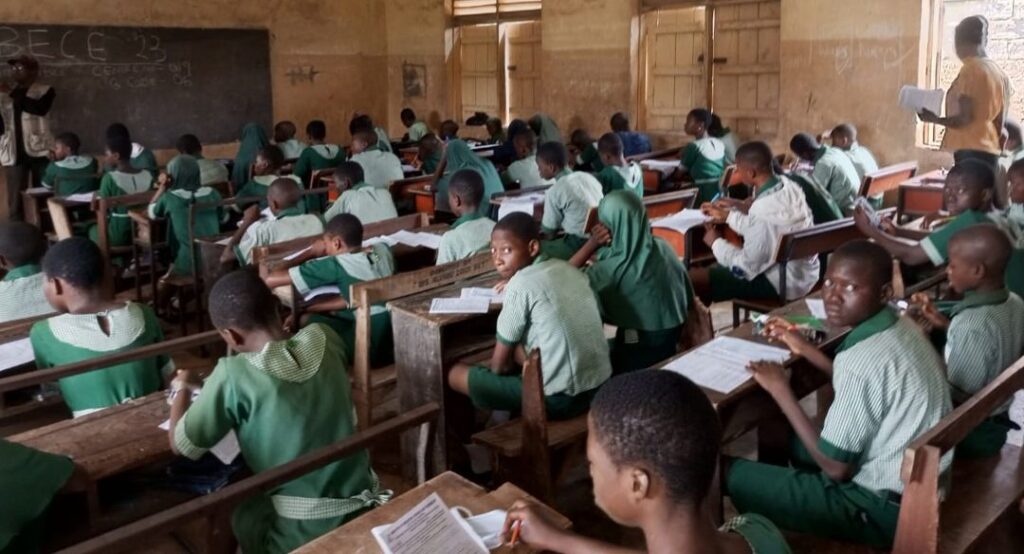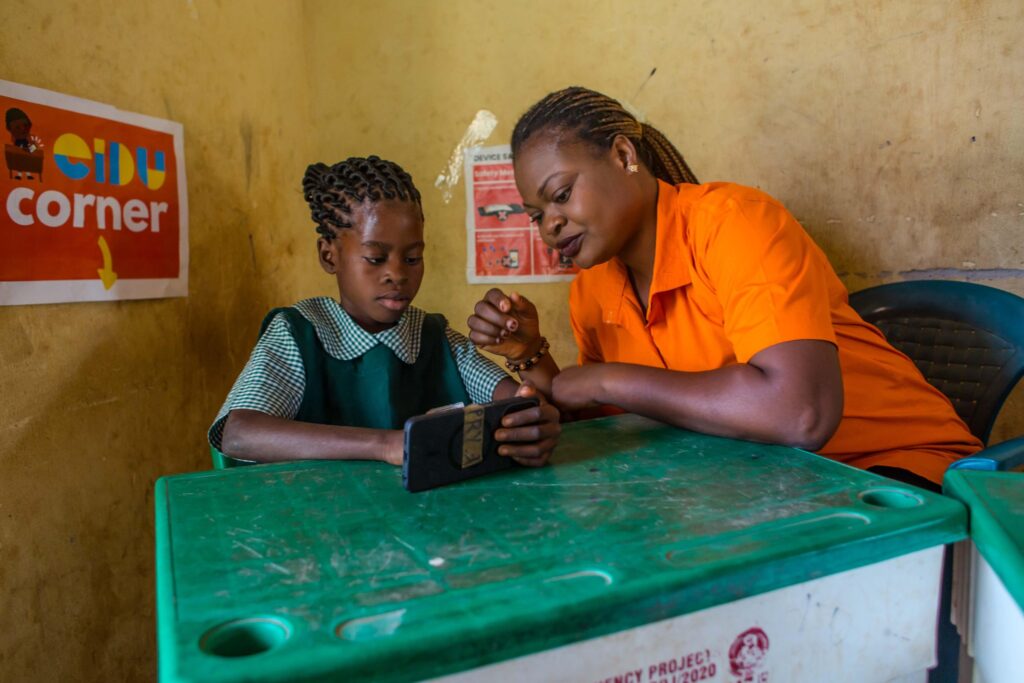On 17 September 2024, an extraordinary moment unfolded in Iseyin, Oyo State: a shipment of smartphones landed at Community Basic School, transforming classroom dynamics overnight. Mr. Abiola Salau, who has dedicated 33 years to teaching, describes that day as a turning point. Although both he and his colleagues had undergone training in modern classroom methodology, the real magic began when children held those devices in their hands for the first time, even more special given how restricted smartphone use is at home.
Once the programme kicked off, initial anxieties faded. Salau says the joy on the pupils’ faces was unmistakable. These small screens became the gateway for students to engage with reading, numeracy and digital literacy in ways they never had before. The environment—a mix of excitement and focus—was unmistakable: the reform was making its presence known.
Table of Contents

An AI-Powered Approach to Reinvent Basic Learning
This transition was made possible through the strategic partnership between the Oyo State Government and EIDU, a respected global leader in education technology. The collaboration introduced an AI-backed pedagogy and digital learning platform targeting children in Basic 1 to Basic 3 across public primary schools.
The initiative was born from a deep concern over the state of foundational learning. The World Bank refers to Nigeria’s learning poverty crisis as “grim”—statistics indicate that an alarming number of 10-year-olds are unable to read or comprehend age-appropriate text. UNICEF’s findings are equally sobering, noting that 73% of Nigerian children in that age group face significant difficulty with basic reading comprehension.
Recognising the urgency, Oyo chose not to concentrate solely on urban schools. Instead, the programme deliberately included hard-to-reach and underserved communities alongside more cosmopolitan pilot schools—ensuring that the benefits of innovation were felt across social and geographic divides.

Training, Tracking and True Inclusion
The introduction of these devices was not simply about giving pupils tech toys—it was a holistic system. Before rolling out the programme in classrooms, extensive training sessions were arranged for headteachers, teachers, and quality assurance officers. This ensured the educators could harness the platform’s full potential and integrate it into day-to-day instruction.
Beyond initial training, the platform delivered real-time tracking of each pupil’s progress—enabling educators to pinpoint struggling learners and provide timely support. Dr. Nureni Adeniran, Chairman of Oyo SUBEB, emphasised that this approach is already yielding remarkable benefits. He noted that the reform is helping not just with literacy and numeracy, but also digital literacy, and is helping schools adopt unified teaching standards across both rural and urban settings.
The impact is measurable in more ways than one. In many pilot schools, enrolment more than doubled—from 50–70 students to around 100—as parents and children alike began associating school with something exciting and valuable.
On the administrative side, over 1,000 teachers have already completed training, with more than 3,000 additional teachers and 76 quality-assurance officers onboarded to sustain and grow the programme.
Blueprint for Replication Across Nigeria
Oyo’s boldness goes beyond its borders. Governors and education boards in other states are taking notes. Ogun State’s Universal Basic Education Board (Ogun SUBEB) recently visited Oyo SUBEB to witness the reforms firsthand and consider similar adoption. This kind of inter-state collaboration, supported by national frameworks like UBEC and BESDA (Better Education Service Delivery for All), points to a hopeful trend in education reform.
The stakes are high. Nigeria remains home to millions of out-of-school children, and its foundational learning outcomes continue to lag global benchmarks. But now, with technology making a real, measurable difference—and with states like Oyo demonstrating what targeted investment and innovation can achieve—there’s a renewed groundswell of optimism.
One of the most compelling aspects of the Oyo model is its demonstrable budgetary commitment. When Governor Seyi Makinde took office, education funding sat at a modest 3–5% of the state’s annual budget. Today, it has climbed impressively to over 20%, showcasing a determined prioritisation of education as a force for societal development.
Given such levels of funding, purpose-driven strategy, and powerful results on the ground, it’s easy to see why education experts and policymakers alike are urging that this model be adapted and scaled by other states.

Conclusion: Small Screens, Monumental Gains
From Iseyin to regional capitals, the essence of this story is clear: small screens have unlocked big gains in education. Technology—once a luxury—is now the bridge to literacy, numeracy, digital competency, and renewed enthusiasm for learning. Teachers are being empowered. Children are being engaged. Communities are rallying behind a new kind of schooling that is dynamic, inclusive, and rooted in future readiness.
Oyo’s Basic Education Reform is more than a pilot—it’s a beacon. It illustrates that, with the right strategy, investment, and innovation, we can restructure Nigeria’s educational foundations one small screen at a time.
Join Our Social Media Channels:
WhatsApp: NaijaEyes
Facebook: NaijaEyes
Twitter: NaijaEyes
Instagram: NaijaEyes
TikTok: NaijaEyes
READ THE LATEST EDUCATION NEWS















![Trailblazing Chef Hilda Baci Set to Cook 250 Bags of Rice in Daring Attempt to Break Record for World’s Biggest Jollof Pot [VIDEO] Hilda Baci](https://naijaeyesblog.com/wp-content/uploads/2025/09/hilda-1-180x135.avif)
























